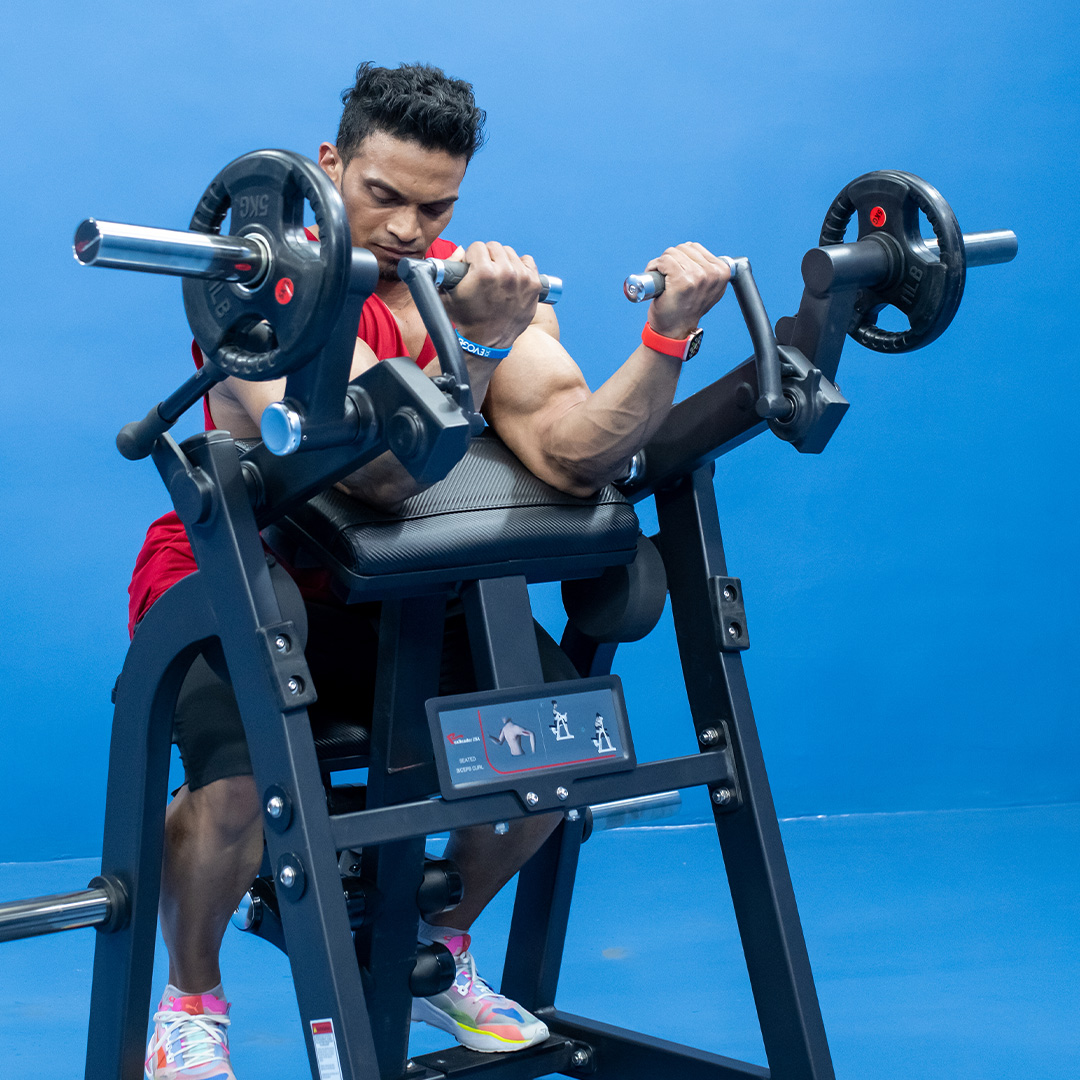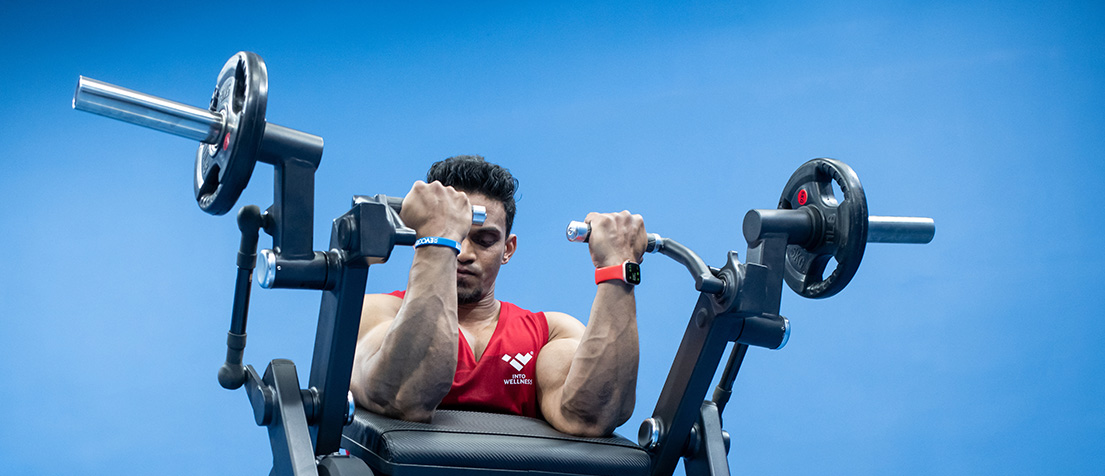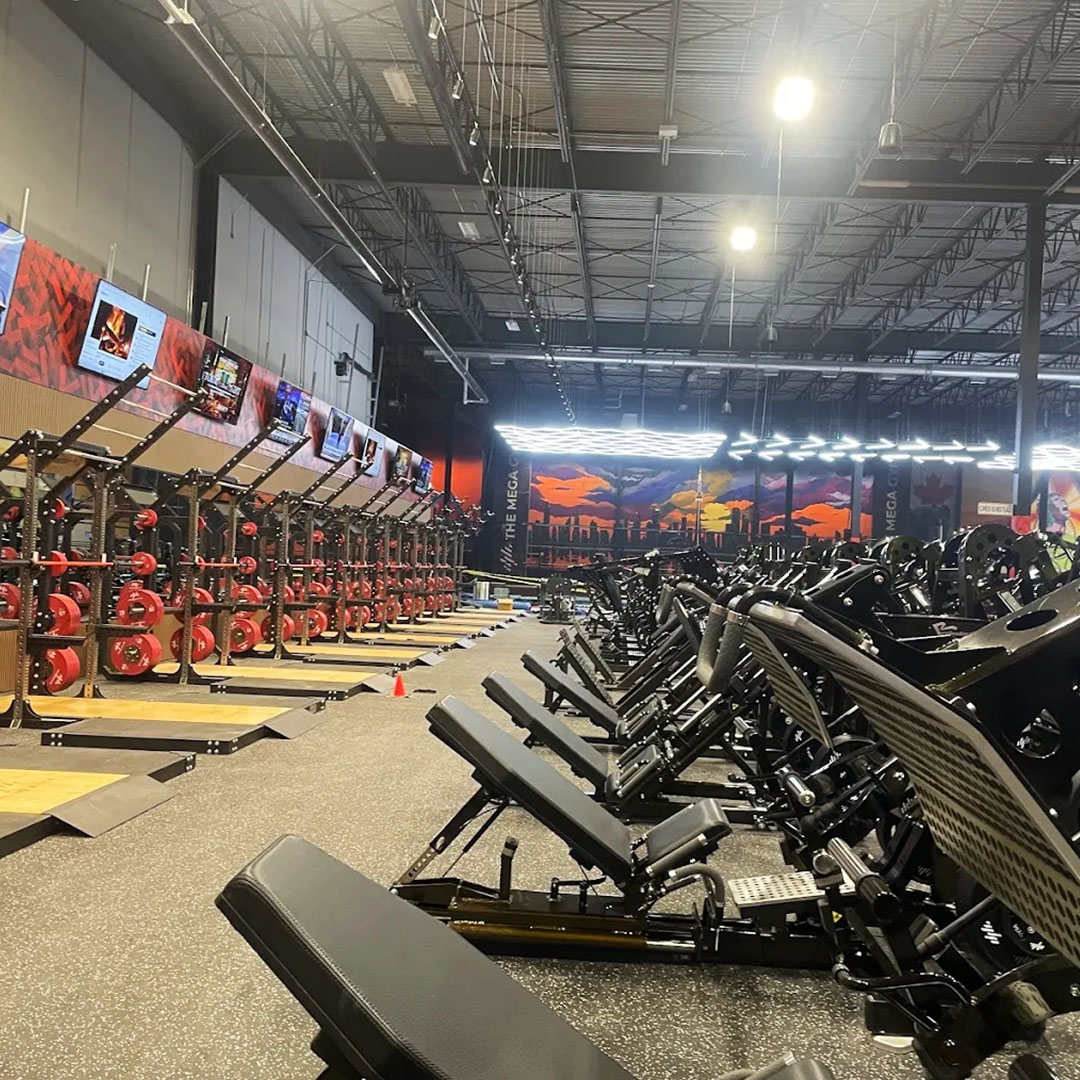“Wondering” how to start your workout journey? This blog will help you understand how to begin and hit your goals with consistent efforts.
Let’s break down the science of sets, reps, and tempo for your personalized workout routine.
Have you ever wondered how many sets to do? This can be confusing at first, but we’ve got you covered.
What is a set?
A set is a fixed number of repetitions of an exercise before a break or moving to another exercise. Not all sets are equal.!
- A superset is two different exercises for two different muscles, done consecutively.
- A giant set is four or more consecutive exercises for the same muscle group.
- A descending set is when you drop weight for the next set without rest, which helps with muscle growth (hypertrophy).
Some exercises may have just one set but with a longer time under tension (TUT) to maximize muscle engagement. There’s no single “best” number of sets. It depends on your repetitions (reps) per exercise:
- Low reps (3–4) mean heavier weights for muscle gain, you’ll need more sets to hit your goal.
- High reps (12–15) mean lighter weights for stamina and muscle size, two sets might be enough as your muscles get the work they need.
More insights from IFBB Pro Sunit Jadhav
Sunit Jadhav says that for real muscle hypertrophy, aiming for 6 to 12 sets of any exercise is important. His advice can make a difference in planning your workout sessions.
Understanding Your Muscles: Fast Twitch and Slow Twitch
Our muscles have two main fiber types. Knowing the difference helps you train smarter.
- Slow-Twitch are your “endurance buddies.” These muscles are built for long, low-impact activities and don’t exhaust easily. Extended cycling, cardio, and swimming are all slow-twitch fiber activities and help increase stamina.
- Fast-Twitch Fibers (Type II) These are your hustlers, designed for rapid, explosive movements, but they tire faster.
- Fast Type II-a (Fast Oxidative-Glycolytic). These are the “hybrid” fibers, powerful but with some endurance. Great for middle-distance sprinting, team sports, or moderate weightlifting.
- Type II-b (Fast Glycolytic). These are your true “detonation cords.” These muscles will provide a fast contraction for sprinting, jumping, or heavy weight work (4–8 reps).
Low-rep, heavy-weight work for muscle training and growth (targeting fast-twitch fibers). Higher reps with lighter weight help build endurance (targeting slow-twitch fibers). Fast-Twitch (Type II) fibers are key for power and significant muscle gains.
Balancing Your Workout: For Beginners & Experts
No matter your experience, it’s about finding what works for you.
- Beginner: Focus on proper form first. Start with 2–3 sets of 10–15 reps per exercise. This builds muscle endurance and helps you learn the movements.
- Expert: Mix it up. Use high reps for hypertrophy and low reps with heavy weights for strength, just like Pro Sunit Jadhav recommends.
Other Factors to Consider:
- It depends on the number of variations you are doing in your workout session and your end goal.
- While working out, take care of your diet. Your meals should be high in protein and fiber with balanced carbs.
- Make sure your body is hydrated with the proper amount of water intake.
- Muscle focus, your experience level, and how your body responds all play a big role.
If you want to explore more about how reps and sets work, Nerd Fitness breaks down the correct number of reps per set in an easy-to-understand way, worth a read for your next workout.
Now that we know about sets, let’s move on to reps.
What Are Reps?
Reps simply mean repeating one exercise till you complete one set, if you are doing squats, one rep is going down and coming up again. While the definition of reps is very simple, figuring out how many reps you should do in your workout session can be tricky.
Many believe that 10-12 reps is the magic number for your fitness goal, but this is not true, as there is no proven research. Here are some crucial factors that will help you in deciding the rep count:
- Are you an expert or a beginner? Beginner should start with fewer sets to master the form. If you are an expert, it all depends on your fitness goals.
- Exercise type—are you practicing a multi-joint exercise like a deadlift or a single-joint exercise like a bicep curl?
- Your target goal—Do you want to increase your endurance, tone your body, or want visible muscle gains?
This information will help you plan your workout session better. These conventions are well researched, including evidence from working with elite athletes.
Strength Training Experts Have Some Clear Guidelines:
- 1 to 5 reps—This range is about increasing your strength with heavy lifts.
- 6 to 12 reps—This range increases muscle strength with mass gain. This is your ultimate hypertrophy zone, as Pro Sunit Jadhav explains.
If your end goal is gaining visible muscles like bodybuilders, low reps with heavy weights are the best way to effectively stimulate the development of your Type IIb muscle fibers.
Let your reps guide you with weights. The physiological basis of this is what we call the overload principle; if you don’t apply overload to your muscles, there’s no scope for muscle growth.
Selecting the right weight for gaining muscles depends on your desired training effect. Once you know your goal, select a repetition bracket to match that goal. If you want to gain muscle size (hypertrophy), here are some factors you can consider:
- Select a weight that allows you to complete at least 6 to 12 reps.
- If you are unable to complete a minimum of 6 reps, the weight is too heavy for your hypertrophy goal.
- If you can do more than 12 reps, it’s time to increase the weight.
The Science of Tension Following the Neural-Metabolic Continuum:
One key aspect you need to know is the amount of weight you are able to lift in one rep max (1RM) is the maximum weight you can handle. This directly tells you how much tension your muscles produce. The level of tension imposed on a muscle is very important for gaining a hypertrophy (muscle growth) response.
The number of reps also depends on the number of sets you practice, your speed while practicing the reps, your rest intervals between sets, and which exercise is best for you. Healthline explains this well; it’s a good read if you want more clarity.
Now that you know about sets and reps, let’s move on to “tempo.” Understanding ‘how much’ and ‘how many’ is equally important to understanding ‘how you move a certain weight.’
What Is Tempo?
Tempo is the motion of each exercise you practice in your workout session. It’s not just ‘up and down,’ but how long you take for each step, including lowering, pausing, lifting, and pausing again. If you want to learn more about how to use tempo to maximize results, Fitbod explains tempo training really well.
Why Does Tempo Matter?
As a Professional bodybuilder, Sunit Jadhav explains, tempo creates muscle tension, which helps in muscle growth (hypertrophy). It also helps you build a crucial mind-muscle connection and improves your strength. Faster lifting boosts power, but you need good form. The best spot for muscle growth is 20 to 70 seconds per set. If you go too fast, you miss out; too slow, you might get exhausted.
How to Read Tempo: The 4-Digit Formula, Explained by Pro Sunit Jadhav.
- To make the process simple, we use a four-digit code, for example, 4211. Each number represents a step.
- First step: reducing the weight (eccentric position).
- Second step: Take a pause at the base (stretch position).
- Third step: Lifting the weight (concentric position).
- Fourth step: Take a pause at the top (contracted position).
So, ‘4211’ for a bench press means going down 4 seconds, pausing at the chest for 2 seconds, taking 1 second to press up, and pausing at the top for 1 second.
The “X” Factor: If you see an “X,” That means ‘explode!’ So ’40 X 0′ means 4 seconds down, no pause, explode up, and no pause at the top.
Slow Vs Fast Tempo: Which One Is Better? This Can Vary For Different Exercises:
- Slow Tempo (4211): slow reps help you build muscle size and control. Less movement, more muscle work.
- Fast Tempo (20 X 0): fast reps increase your speed and power, but master your form before exploring fast tempo.
Bodybuilders should focus on a slower tempo for greater tension and better muscle fiber activation. Pausing, especially in stretch positions, cranks up tension and helps gain even more muscle fibers.
Why You Should Vary Tempo:
Choose your tempo according to your goal. Use slow for muscle size and explosive for strength training.
Bringing it all together

Your Journey to Smarter Strength Training. Now you know the science behind sets, reps, and tempo. There is no magic trick that makes it all work overnight. Understand your goal and plan your workout sessions accordingly. Your fitness journey isn’t just about lifting weights, it’s about putting all this information to good use to build a plan that works for you. Apply these principles, monitor your body, and make adjustments accordingly.
Stay consistent with your workout session; this will help you reach your goal faster. Stick to the no pain, no gain mindset and keep going!






